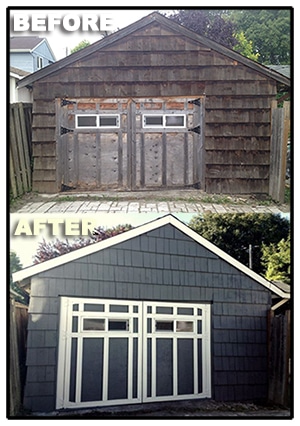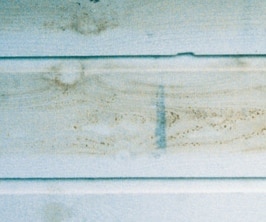(206) 258-6676

Why Use Primer?
Because primer is important!
Despite all of the hype surrounding “Paint and Primer in One” products, there are many situations where a coat of primer on its own is crucial to properly preparing a surface (interior or exterior!) for a paint job. While “Paint and Primer in One” products are often an excellent choice for previously painted interior surfaces that are in good condition, we find that most other situations, especially on exterior projects, require a separate coat of primer.
Primer creates a layer that paint can better adhere to. While applying primer may seem like an “extra” step, you may find that it actually saves you time and money, since primer tends to be less expensive than paint and by using it, you are saving yourself from buying that extra paint. In this blog, we have compiled a list of scenarios where primer is most helpful.
New Drywall
New drywall is extremely absorbent. It tends to soak the paint up like a sponge, causing you to use more paint than necessary. Worse still, the paint often lays down unevenly when it comes to bare drywall, causing “flashing”, or an uneven appearance in sheen. The primer helps to seal this porous surface and create a smoother substrate, improving the overall appearance and longevity of the paint.
Raw Wood
Unfinished wood should always be primed prior to painting. Primer, having high-solids content, helps fill in the wood grain and creates a smooth surface for the finish coat. Like the raw drywall, unfinished woods tend to really soak up paint, and primer helps seal the surface to prevent this from happening. Either latex primer or oil-based primer is suitable for raw wood, depending on the type of paint you will use. However, keep in mind that for wood such as cedar or redwood, oil-based primer is actually necessary as it penetrates deeper into the wood, helping to prevent tannin stains.
Stains
Stains from smoke, fire, pets, water damage, etc. can be extremely difficult to get rid of. They can bleed through your new coat of paint, even if you used primer beforehand! The key here is to use a special primer designed to block stains and even odors. Our favorite product at Sound Painting Solutions is Zinsser’s Shellac-based primer.
Color Changes
For significant color changes, a primer is absolutely necessary for you to achieve your desired result in a reasonable amount of time. If you have ever tried to change the color of the wall from a darker color to a lighter one, you may have noticed that the dark color continues to show through even after multiple coats. Primer helps hide the darker color before you begin applying the lighter paint. Conversely, if you are painting a darker color over a lighter color, you may notice the darker paint goes on too sheer, even after multiple coats. Primer, of course, is helpful in this situation as well. A little-known tip is that you can ask the paint store to tint your primer to a color close to your paint, helping you achieve a darker color in less coats! We tend to have our primer tinted at 50% of the desired color, whenever needed.
Finally, remember to always prepare your substrates and surrounding area even before applying the primer. This includes patching any holes and cracks with spackle, sanding any patched areas or loose paint, thoroughly cleaning any dirt or grease on the walls, and protecting surrounding areas (like plants and furniture) with plastic, masking and/or drop-cloths.
Any thoughts on the usefulness of primer? Any DIYers have their own experiences to share? Please leave us a comment below!


Comments
Getting ready to paint old wood–primer coat gets sucked up very quckly. Should I use a second coat of primer, or maybe just figure on 2 coats of the main paint?
Hi Joyce! We typically double-prime when we encounter a surface that is super porous.
Looking absolutely wonderful. Yikes! Before Thanksgiving already! Can’t wait to see what comes next! Looks awesome! Love the drywall idea! Beautiful work!
Question to ask can I use primer for masonry to prime the raw wood ? Or I have to use primer just for wood only ? Thanks
Hi Chu, we would recommend using a latex bonding primer for raw wood surfaces.
Liquid vinyl siding, used mostly southern states.
Anyone used it?
I never knew that it is important to use a primer before painting so that the paint can have a layer to more easily adhere to. I’m going to be painting one of the bedrooms in my house soon and I don’t know what kind of paint or primer to use. I think I will go to my local paint store and talk to one of the experts there.
What if you are using a piece of wood as a plate to fix things onto. I was just going to paint it into the wall to hide it. It is old previously painted wood anyway, just a few bits where some paint flaked off when I was sanding it exposing bare wood. I don’t want the bother of sanding it all down to bare wood. So unless anyone tells me not to I will fix it up and paint with the same emulsion as the walls.
Primer on the exposed area will help the paint adhere, last, and help with the appearance. No need to sand everything down to bare wood, but sanding out the peeling areas was a good choice. You should be able to paint over the areas where the previous coating is sound.
Primer is more important than I thought. I didn’t realize that it affected if you get the desired color you choose. This was pretty helpful since I’m planning on painting my kitchen orange.